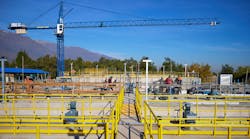In an effort to improve water quality and create jobs, the U.S. Environmental Protection Agency (EPA) has awarded funding to several New England states under the American Recovery and Reinvestment Act of 2009. A total of $39 million will be awarded nationally to states for Water Quality Management Planning (WQMP) grants, which will keep and create jobs to help prevent water pollution and protect human health and the environment.
Recent funding announcements include:
• $265,800 to the Rhode Island Department of Environmental Management;
• $194,300 to the Vermont Department of Environmental Conservation;
• $306,400 to the Maine Department of Environmental Protection;
• $395,600 to the New Hampshire Department of Environmental Services; and
• $1,343,900 to the Massachusetts Department of Environmental Protection.
"The Recovery Act investments are meeting urgent needs for economic growth and protecting human health and the environment,” said EPA Administrator Lisa P. Jackson. “Communities across the nation can count on green jobs to help pull them out of this downturn and ensure the long-term strength of our economy and our environment.”
Planning is an important step in EPA’s goal to improve water quality in America’s lakes, rivers and streams. WQMP grants support a broad range of activities, such as setting standards, monitoring the quality of the water, developing plans to restore polluted waters, and identifying ways to protect healthy waters from becoming polluted.
“Including Recovery funding for water quality management planning was a smart way to ensure that as we upgrade our water treatment plants, we are also keeping a focus on the bigger environmental picture,” said Ira Leighton, acting regional administrator for EPA’s New England office. “These efforts can result in improvements such as better strategies for reducing nonpoint source pollution, employing green infrastructure, improving water or energy efficiencies and other environmental innovations.”
States are also encouraged to use these funds for more innovative planning activities like developing plans to adapt to climate change, analyzing trends in water availability and use and creating low-impact development programs. Grants are awarded to state agencies and some of the funds can be awarded to regional and interstate planning organizations.
Source: EPA


